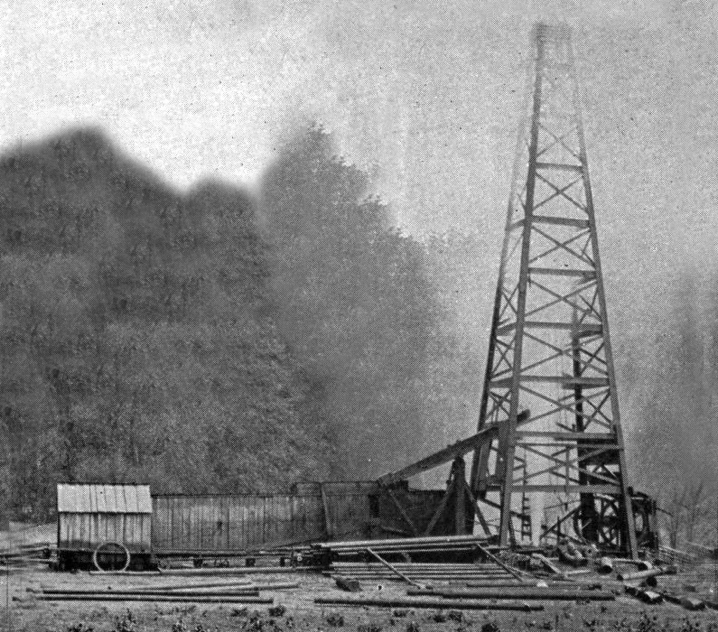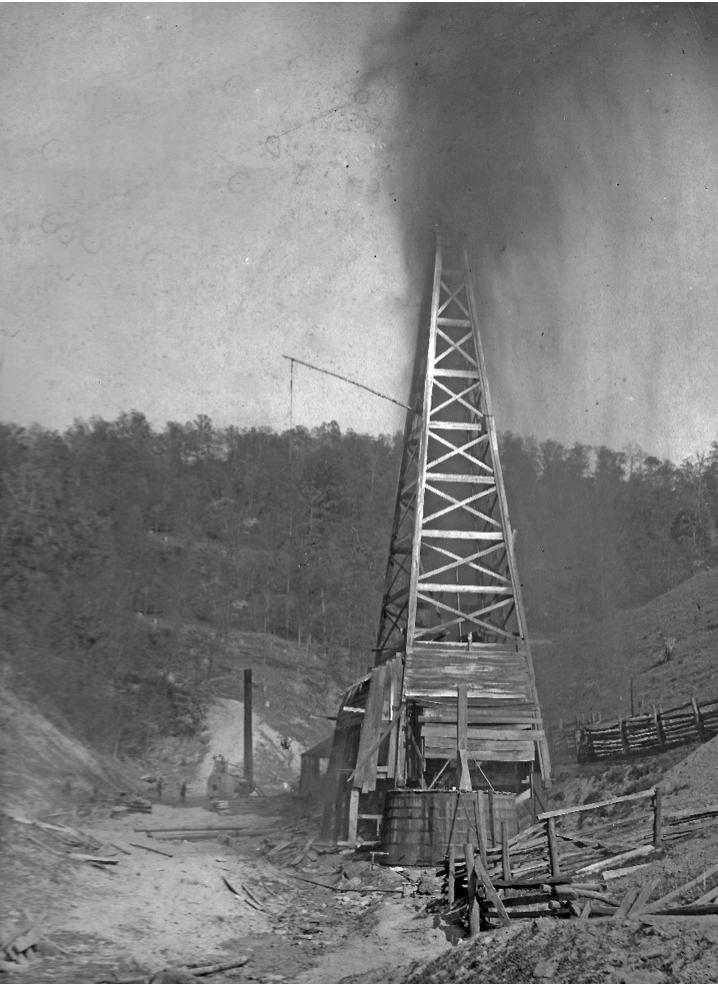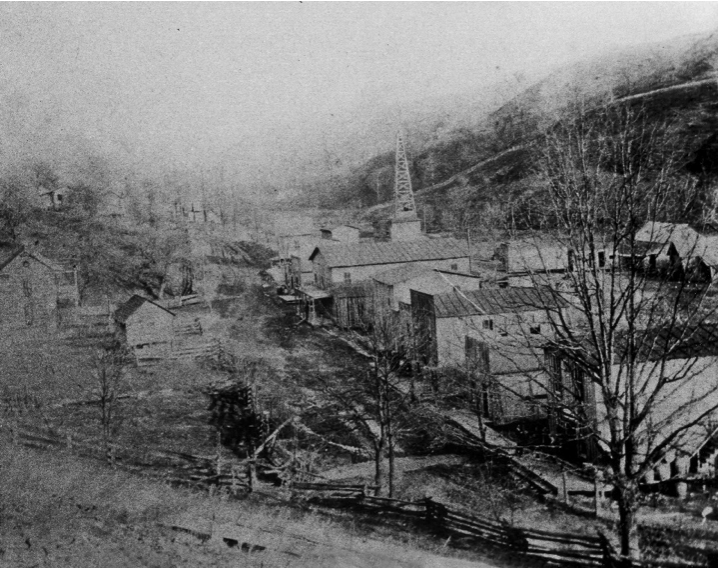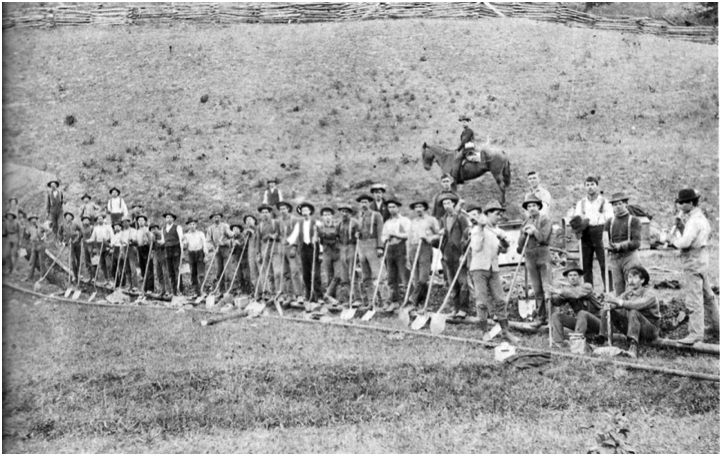
Early Oil and Gas Industry
With the massive increase in energy production during the past decade in Doddridge and other surrounding counties, I decided to republish my article on the early oil and gas industry but with some additional information and updates.
But, before I do that, I must ask, “Did you know that as far back as 940 BCE, natural gas was being utilized in China? It’s true, according to ancient records, but I digress. Let’s get back to today’s story…
In 1855, German chemist, Robert Bunsen, invented the aptly named Bunsen Burner, a device that combined a flammable gas with controlled amounts of air before it was ignited, producing a hotter flame than using the ambient air and gas alone. It was a forerunner to the gas stove and furnace. This enabled natural gas to be used efficiently for all fuel purposes. As they say, “The rest is history.” The industrial boom was upon us.
The “Drake Well,” drilled in 1859 on Oil Creek in Crawford County, PA, is said to have been the first oil well drilled in the U.S. However, some claim that small wells were previously dug in northwestern VA, now West Virginia. Supposedly, the oil used to lubricate the Drake drilling rigs was obtained from these wells. We know that there was oil found in gravel beds in 1810. Marketed at “bank oil,” Bushrod Creel sold 100 barrels annually in 1836.

Big Moses well drilled on Indian Creek in Tyler County.
If Drake was the first, which well was the biggest “gasser?” According to every record I researched, the most significant gas well ever drilled in WV was the ‘Big Moses’ well, drilled on September 6, 1894, at the Moses Spencer farm on Indian Creek in Tyler County. The well was too big to test but was estimated to flow more than 100,000,000 barrels daily. It flowed uncontrollably for more than a year. The wooden derrick burned to the ground when struck by lightning the following June, as did a second rig that was rebuilt the following month.
As for Doddridge County, some accounts say there were small oil wells drilled before 1859, while others say that South Penn Oil Company was the first company to begin the development of oil and gas when it opened the Center Point oil pool in 1892. Called Sullivan Heir’s #1, it was located on the north bank of McElroy Creek, three-fourths of a mile north of Center Point. The oil pay was encountered in the Big Injun Sand.
The South Penn Oil Company drilled the Charles Slussler #1 Well located .8 mile west of Big Isaac at about the same time. The gas pay was struck in the Big Injun Sand as well.

Cascara well.
The next large oil pool to be opened in Doddridge was the Hardman Pool, located in the extreme northwest portion of McClellan District along the Doddridge-Tyler County line. Murphy and Jennings drilled the first well in this pool on the Hardman farm in 1895, producing a 500-barrel well in the Big Injun Sand. Later other wells in this field were drilled down to the Gordon Sand, and another oil pool was obtained at that horizon. At that time, Mike Benedum, the ‘Great Wildcatter,’ went to work for the South Penn Oil Company in this area, leasing land. John Worthington employed him in the Grant Hotel in West Union, where the Medical Center is now.
In 1898, the Sedalia gas pool was opened in the Gordon Stray Sand by the Carter Oil Company in their Camden Heirs Well #1, located on Robinson Fork 2.8 miles south 10° west of Sedalia. The same company opened the Stout oil pool in the Gordon Sand on February 1, 1899, according to Geologist I. C. White, in its S.W. Stout #1 well on the South Fork of the Hughes River, .6 mile southeast of Kelley (Porto Rico). This well had a daily production of 50 barrels one month after drilling.
The first week of January of 1900 brought a test well on the G. W. Netser farm at the head of Lick Run, which produced 10 barrels a day in the Gordon Sand.
At about the same time, on the South Fork of Hughes River, the Carter Oil Company completed its Well #2 on the D.P. and L.M. Stout farm. It was a 35 to 40-barrel producer.
L.B. Hill, the prominent broker and producer, sold 500 acres of his 1,100 acres lease in the Lewis Maxwell tract to Guffey & Galey of Pittsburg.
The Leonard Oil Co. completed a second test well on the John Ash farm on Ragan’s Run, which was a 90-barrel-a-day producer. Those were good days for the people of Doddridge.
Still, the first real “oil boom” came in 1906 when the wells were drilled inside the town borders. The well at the athletic field was drilled in 1910. Every landowner with an acre seemed to drill a well on it.
Interestingly, in 1911, Doddridge County became home to the next most significant well ever drilled in WV. Like “Big Moses,” it was also too big to test. The Carter Oil Company drilled it on Arnolds Creek across from Pigott Church. That well, along with the Camden Heirs Well of Sedalia, was probably two of the largest producers of gas ever drilled in this area.
The list goes on and on, but time and space only allow for some of them. However, I can tell you that other important fields opened in the county included the Robinson Fork Oil Pool in the Gordon Sand in the eastern part of McClellan District; the Harris Oil Pool in the Big Injun Sand located in the western part of Central District; the Smith Oil Pool in the Big Injun Sand, located 1.5 miles north of West Union; the St. Clara Oil Pool in the Berea Sand, located in the extreme southern point of Cove District; the Long Run Oil Pool along the eastern border of Grant and Greenbrier Districts; and the excellent gas Pool along the crest of the Arches Fork Anticline.
The structural folds that lie under Doddridge County are from east to west; the Wolf Summit Anticline, Robinson Syncline, Arches Fork Anticline, Burchfield Syncline, and the Big Moses Anticline. Dr. White, the state geologist, began establishing the location of the above folds in about 1897. His work continued until a book of his works was published on September 1, 1912. Although much drilling had taken place in Doddridge County before 1897, drilling speeded up due to these studies and continued until the crash of 1929.
Some of the major companies in this area were, at that time, Carnegie Gas Company, Carter Oil Company, Devonian Gas and Oil Company, Hope Natural Gas Company, Philadelphia Company, and South Penn Oil Company. Many smaller drilling companies, such as Bunting Drilling Company, Carl Perkins Drilling, and Pigott Drilling, began at the Pennsylvania border and went down the folds drilling for oil or gas. South Penn and Carter were primarily interested in oil, while the Hope Gas Co. was mainly interested in gas. A company couldn’t remain strictly in the oil or gas producing business as a well drilled for one product would sometimes come in as a producer of the other. To avoid this, agreements were made between Hope Natural Gas Co. and South Penn and between Hope Natural Gas Co. and Carter Oil Co. to take leases where Hope would have the gas rights and the other company, South Penn or Carter, would have the oil rights. Then, if Hope drilled the lease and struck oil in the process, they had to give the other company the right to take it over. Many leases of this type are still in existence.

Oil wells drilled at Porto Rico
Because they wanted to get out of the oil business, Hope Natural Gas Company drilled deeper wells only to strike oil and be put back into the oil-producing business.
Between 1900 and 1929, many oil and gas fields were drilled. It seemed every district in the county had them. Oil and gas contributed to other industries in the county, such as Acme Carbon, Castle Brook Carbon, Mountain State, and Southern Carbon companies near Smithburg and West Union. In the early 1900s, Glass factories like Ideal Glass and Doddridge County Window Glass were built utilizing gas as a cheap fuel. Beautiful new Victorian homes sprung up as a result.

Pipeline workers in the early 1900s.
Some independent operators did much of the drilling in Doddridge County. Foremost among them was Edward Trainer of West Union and Salem, WV. Others were Dexter Gribble and Charles H. Pigott.
Unlike today, the roads were primarily dirt. Travel was mainly by train, horse, horse & buggy, or wagon. It was not necessary to have paved roads. Use your imagination as to what the road conditions became.
As they say, “All good things must come to an end,” and such was the case here. Oil and gas production dropped off during the Great Depression of the 1930s. Those who had become wealthy remained snug in their big new homes; for everyone else, not so much. Jobs were lost. The few jobs available paid only a fraction of the wage they were used to. Families were forced to sell beloved heirlooms, even the homes they could no longer afford. They were forced to move to find work, but time marched on.
But all was not lost in Doddridge; new drilling began again during World War II. In 1941, Snider Oil Co. drilled #3 & #4 on Elk Fork, which made 900 and 350 barrels a day. Treat & Crawford’s #8 Asher on Elk Fork was producing 1,100 barrels a day. Drilling was again becoming a trend. Life smiled again. Many more wells followed.
In the 1960s, the second oil boom came to Doddridge County; it was set off when J.M.L. Smith brought in a well at the mouth of Doe Run that tested 10 million cubic feet of gas and flowed 200 barrels of oil per day. It wasn’t long until wells were drilled on adjoining lots over a great deal of Wabash Addition and other parts of town. Large fields were drilled at Greenwood, Long Run, Little Flint and Big Flint, Nutter’s Fork, New Milton, Beech Lick, Arnolds Creek, and Greenbrier. It was common to drill wells producing 50 to 100 barrels daily.
No way to understate it; Doddridge County was booming again. Saturday nights were noisy and exciting in West Union. Women and children walked the streets window-shopping in fully stocked stores, stopping at the soda shop for ice cream sundaes. Men were hanging out in the pool halls and drinking establishments. Life was good.
Unfortunately, with so many holes being drilled, it didn’t take long to drain the area of gas and leave much of the oil in place.
During the following two decades, drilling was done predominantly by promoters who raised money from afar. Sometimes this money came from foreign countries. Several contractors were kept busy drilling wells with air rotaries. It took them about three days to drill a well 2,000 feet deep and about a week to drill a well a mile deep.
In the mid-1970s, WV had more than 21,000 producing wells and ranked fifth among all the states in the ultimate capacity of underground storage reservoirs, with a 452.5 billion cubic feet potential.
The pipelines were not in good shape. When the lines were laid, they were expected to last until 1970, at which time it was expected that oil would be primarily exhausted. By 1979, most lines were being discontinued, and oil was being collected by trucks.
I shall end by saying that everything comes at a cost, and the county’s prosperity was no exception. There were negative impacts on the environment due to the oil & gas industry. You need only ask those who lived through its incessant activity during those years to know that vital habitats, forests, and pristine public lands were converted to well-pads. Pipelines, roads, impoundments, and other infrastructure completely reshaped the landscape. Accelerated stormwater runoff increased nutrient and sediment levels in nearby streams that will never fully recover. Extensive areas were cleared. Roads, not built for such loads and traffic, degraded and became almost impossible to traverse for the locals. Inadequate requirements for how far oil and gas wells must be placed from existing domestic sites caused drinking water from family wells to become contaminated.
Does what was gained outweigh what was lost? The vote is still out on that.
God Bless
Patricia Richards Harris
Doddridge County Historical Society
